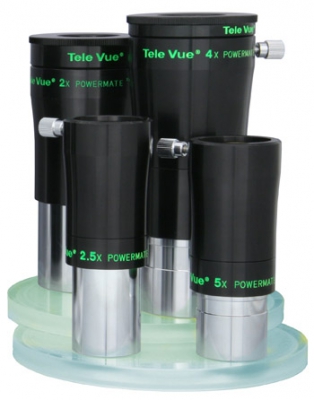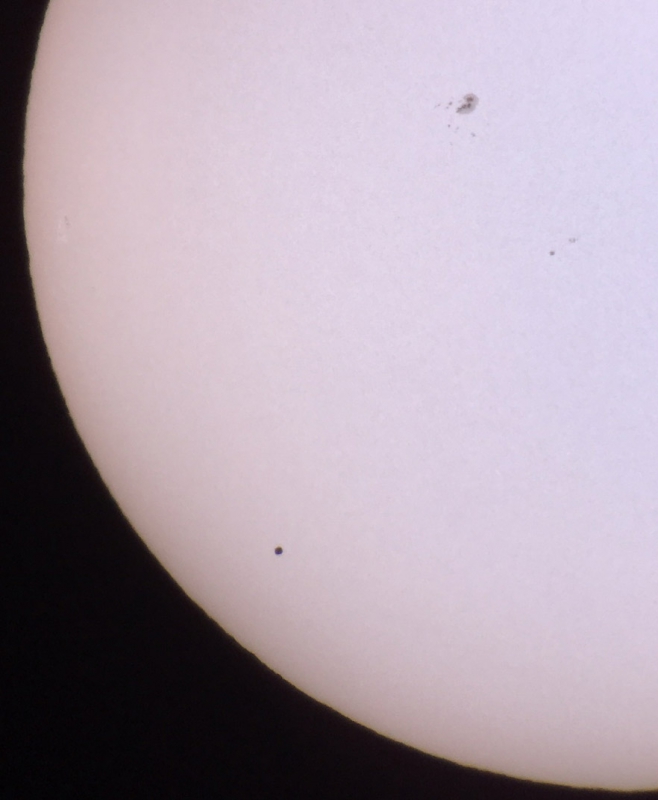Get Ready NOW for November’s Mercury Transit!
Now is the time to prepare for the premier astronomical event of 2019!

While there are at least 20 solar eclipses in a decade, there will be only 13 transits of Mercury each century! The next one, on November 11th is less than 8 weeks away. You should be checking your gear and doing dry runs on the Sun now (hopefully with sunspots) to prepare for this rare event: the one after this will be a long way off in the year 2032.

For the upcoming event, Mercury is near perihelion at only 10 arc-seconds in diameter. At that size, you’ll need planetary magnification on a solar filtered telescope to appreciate the spectacle — eclipse glasses over your eyes will not do!

Timing for this event is from 12:35 to 18:04 UT on November 11, 2019 with closest approach between the centers of Mercury and the Sun (a close 76″ separation) at 15:20 UT. The complete transit will be visible in eastern North America, Central America, South America, most of the Atlantic, parts of the Pacific, and a slice of western Africa.
Don’t fret if you live outside the complete zones: being a 7½-hour event, many areas of the planet will see part of the event. For example, most of Europe and Africa that don’t see the complete event will see the start of the transit but miss the end as the Sun sets. Likewise, the part of North America that misses the start will see the transit in progress at sunrise and witness the end. Observing from these areas does have a benefit: transit images made as the Sun sets or rises on the horizon can be quite striking!
The only areas seeing no transit at all are Australia, Southeast Asia, Japan, the Koreas, China, Mongolia, most of India, and parts of Russia some distance west of Moscow and the Caspian Sea.

Whether you’re setting up your scope in a hurry, or manually recentering on the Sun, Tele Vue’s Sol-Searcher makes it easy to find Sol. The front aperture acts as a “pinhole” which projects an image of the Sun on to the translucent “screen.” This screen can be viewed from either side. Simply move your scope until the Sun’s image is centered on the screen. The Sol-Searcher attaches to the mount ring slot of every Tele Vue telescope (or to the rear cell slot in the Tele Vue Ranger). For use with telescopes other than Tele Vue, mount the Sol-Searcher using #10-32 screws, or if necessary, attach with Velcro (not supplied).

An easy entry into transit imaging with your telescope is by using your smartphone with our FoneMate™ smartphone adapter securely clamped to a compatible Tele Vue eyepiece. Smartphones as big as the Galaxy Note 4 (shown) can be fitted to the FoneMate™. This allows stills, video, timelapse images of the event to be recorded.

If your tests show your scope needs more “reach” consider our 4-element Powermate™ photo / visual amplifiers. They increase the focal length of your scope with reduced aberrations, greater magnification potential, and compact size size compared to typical Barlow lenses. Also, Powermates™ can be stacked with no adverse impact. Tele Vue Powermates™ are available in 2″ barrels (2x & 4x) with 1¼” adapters and 1¼” barrels (2.5x & 5x). Can be used with diagonal or without using a short extension.
Imaging with Powermates™ is easy: the visual tops all unscrew to accept a specific Tele Vue Powermate™ T-Ring Adapter for use with standard camera T-rings. Otherwise a cameras just needs a slip-in 1¼” or 2” nosepiece to slide into the visual top.


- Our Sol-Searcher makes finding the Sun easy (mobile version)
- FoneMate smartphone adapter mounts securely to most recent Tele Vue eyepieces (mobile version).
- Powermate extends the reach of your scope better than a Barlow (mobile version)
- Mercury and Venus transit / occultation images / videos on our website (mobile version)
- Mercury Transit 2019 world map, path across Sun, weather, and more on Xavier M. Jubier’s website.
- EclipseWise.com 2019 Transit of Mercury page.





